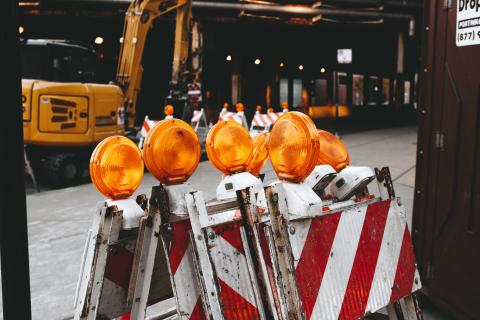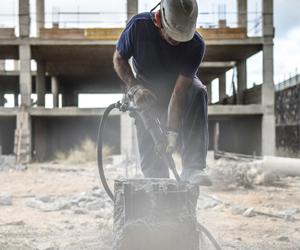
AIRSAFE is a prequalified supplier to the NSW government under the Performance and Management Services Scheme, managed by NSW Procurement.
NSW Government agencies can easily access AIRSAFE and its services via the panel at https://buy.nsw.gov.au/schemes/performance-and-management-services-scheme.
The Department of Premier and Cabinet, in collaboration with the Department of Services, Technology & Administration, established the Performance and Management Services Prequalification Scheme, a panel of pre-qualified service providers to assist NSW Government agencies.
The prequalification scheme can be used by the whole of the NSW government and its statutory corporations to engage external expertise. To be successful in joining the scheme, suppliers must demonstrate their ability to provide high level strategic advice, and good understanding of contemporary approaches to public sector administration and improvement.
AIRSAFE was able to satisfy all selection criteria and has been listed for capabilities in environmental assessment. AIRSAFE is now fully qualified supplier under the Scheme, which allows NSW government buyers to engage our services.

At AIRSAFE, we are always seeking ways to develop and improve as a business.
That is why AIRSAFE is proud to be certified as ISO 9001:2015, ISO 14001:2015 and ISO 45001: 2018 compliant. With these certificates, we meet international requirements for Quality Management (ISO 9001), Environmental Management (ISO 14001) and Occupational Health and Safety (ISO 45001).
In 2019, AIRSAFE set itself the objective to develop an Integrated Management System for quality, environment and occupational health and safety.
The certification was achieved by implementing an Integrated Management System across the company that matched the principles of each ISO standard.

ISO 9001:2015 – Quality Management
ISO 9001:2015 is recognized as the worldwide standard for quality management systems and practices. In plain English, this means we’ve taken a number of steps to improve our operations and optimise the way we move into the future.
ISO certification is an internationally-recognised quality management system, and is found in only highly efficient organisations that make a commitment to continual improvement.
We look forward to moving into the future in a more efficient, professional and friendly manner, serving more customers with a product that will continue to increasing in its quality.
ISO 14001:2015 – Environmental Management
ISO 14001:2015 specifies the requirements for an environmental management system that an organization can use to enhance its environmental performance. ISO 14001 is an international standard that organizations can only receive if they make improvements to their environmental standards, while keeping the standard of the final service of a high standard.
Quite simply, at the top of our list of considerations as we do business is a commitment to minimise our environmental impact; and now we’ve got the certification to prove it.
ISO 48001:2018 – Occupational Health and Safety
ISO 45001:2018 specifies requirements for an occupational health and safety management system. ISO 45001 is an international standard that organizations receive when they develop efficient safety systems, while keeping the standard of the final service of a high standard. This means that atop our list of priorities as we a business is a commitment to preventing workplace injury and illness; and now we’ve got the certification to prove it.
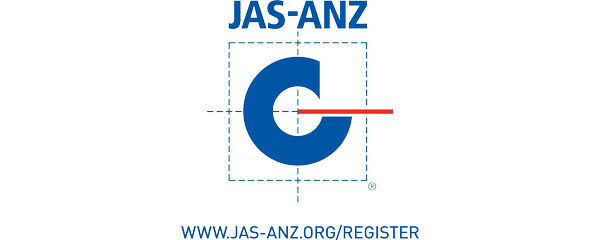
AIRSAFE received the accreditation in recognition of its commitment to each of these three standards by a JAS-ANZ accredited certification body, Best Practice Certification.
About JAS-ANZ
Joint Accreditation System of Australia and New Zealand (JAS-ANZ) is an accreditation authority and framework, with the purpose of enhancing national, trans-Tasman and international trade via accreditation, in order to achieve international recognition for the excellence of Australian and New Zealand goods and services.
JAS-ANZ is a member of the International Accreditation Forum (IAF) and the Association of Accredited Certification Bodies (AACB).
With the implementation of an integrated Management System under these standards, AIRSAFE strengthens its capacity to carry out projects that meet customer requirements and comply with legal regulations, as well as promoting and achieving environmental and OH&S compliance and performance.
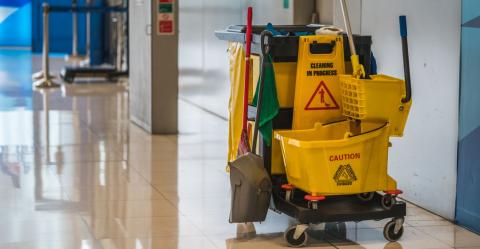
The Covid-19 pandemic has reinforced the importance of surface cleaning as part of creating a safe and healthy workplace. While the cleaning protocols enforced in the early days of the pandemic no longer apply, people in charge of workplaces should learn the lessons of Covid and ensure proper cleaning procedures are followed.
General cleaning and hand hygiene
It is good practice to routinely clean surfaces at your workplace. Clean frequently touched surfaces with detergent solution. Clean general surfaces and fittings when visibly soiled, and immediately after any spillage.
Soap and water can be used for hand hygiene at any time, and should always be used when hands are visibly soiled.
Alcohol-based hand rub (sanitiser) can be used if soap and water are not readily accessible, except when hands are visibly soiled.
Cleaning hands regularly also helps to reduce environmental contamination.
Environmental cleaning procedure
In situations where there is a known risk of exposure to a dangerous substance or pathogen, you will need to follow a rigorous environmental cleaning procedure:
- Wear Personal protective equipment (PPE, see below).
- Work in a well-ventilated area.
- Wipe the area with bleach solution using disposable paper towels or a disposable cloth.
- Clean horizontal and frequently touched surfaces, furniture and fittings.
- Clean windows, sills and frames.
- Clean air conditioning units and dispose of filters.
- Mop the floor.
- Once cleaning is completed, place all disposable cleaning items in a rubbish waste bag. Waste does not require further handling or cleaning measures.
- Clean reusable cleaning items such as mops using hot water, and dry them completely.
- Remove PPE.
- Dispose of PPE in a leakproof plastic bag.
- Wash hands well using soap and water and dry with disposable paper or single-use cloth towel. If water is unavailable, clean hands with alcohol-based hand rub.
Personal protective equipment (PPE)
Personal protective equipment (PPE) for the environmental clean should be put on before entering the work area. Appropriate PPE includes:
- Disposable overalls
- P2/N95 respirator – should be fit-checked with each use
- Face shield or goggles
- Disposable non-sterile gloves (with hand hygiene before putting on and after removing gloves).
Engage an occupational hygienist
You should engage an occupational hygienist to provide guidance on the cleaning requirements and certification at the conclusion of the cleaning process.
The scope of work should involve the following:
- Walkthrough inspection of the property
- Bio tape swab sampling for microbiological contamination
- Laboratory analysis of selected samples by an accredited laboratory
- Preparation of inspection and recommendations report.
Airsafe has occupational hygienists and a group of contractors readily available. We can project manage the environmental clean or provide advice and guidance on the clean-up process.
Call Airsafe now on (02) 9555 9034.
Legislative Requirements
Airsafe’s inspections and reports are always undertaken in accordance with the requirements and principles of the relevant legislation and guidelines, including:
- NSW Work Health and Safety Regulation 2017
- NSW Work Health and Safety Act 2011.
What is an environmental site assessment?
An environmental site assessment is a study of past and present activities on a site or parcel of land. The information we gain from an assessment allows us to judge the possibility of contamination on the site, and the human and environmental health impact of that contamination.
An environmental site assessment involves a number of steps:
- historical study
- site inspection
- collection and testing of soil samples (and groundwater samples in some cases).
Assessments are often divided into 2 phases:
- Phase 1: preliminary assessment including a desktop review of relevant site information.
- Phase 2: uses the Phase 1 information for a more detailed assessment, including testing soils and/or groundwater for contamination.
The assessment culminates in a final report.
Airsafe performs environmental site assessments in accordance with state and territory legislation and policies, Australian standards and EPA guidelines.
When do I need an environmental site assessment?
An environmental site assessment is part of regulatory compliance. The EPA or your local council may require one as part of site rezoning or redevelopment requirements, or for property purchase or divestment, due diligence or commercial liability clean-up.
How to engage a consultant for an environmental site assessment
There are a couple of questions you should ask before engaging a consultant.
Do they have the necessary expertise?
Consider the type of expertise required to perform your particular site assessment. Environmental consultants typically perform assessments for a wide range of contamination issues, while occupational hygienists tend to specialise in asbestos.
Consider whether an accredited site auditor should be appointed to oversee the site assessment and any subsequent remediation works. Site auditors might be legally required when works are regulated under the Contaminated Land Management Act 1997 or Environmental Planning and Assessment Act 1979. However, they can also provide great value where complex contamination issues exist, or where the property will be involved in a high value transaction.
You should ensure the person carrying out the environmental site assessment is suitably qualified. This may include formal certification under an EPA-recognised scheme.
Do they have the right information?
Ensure the person carrying out the assessment has access to all relevant property information, and clearly understands the long term objectives for the property.
If the consultant has all the information they need, the site assessment should allow you to determine the location and extent of contamination, the fate and transport of the identified contaminants, and any impacts on the property management objectives.
Assessing risk if contamination is found
Consider evidence of harm to human health or the environment, potential exposure pathways, and evidence of off-site impacts. Also consider any business risks that may arise due to the contamination, including legal, financial or reputational risks.
You should also consider whether any preventative action can be taken to avoid further contamination.
Asbestos exposure risks
If asbestos is found in or on soil, the likelihood of exposure depends on:
- the potential for the asbestos material to release fibres
- whether the asbestos material is contained or covered
- operational control measures or personal protective equipment used to limit airborne fibre generation or inhalation.
Factors in how asbestos in soil is managed
If soil has been contaminated with asbestos, understanding the history of the site and how it became contaminated gives us useful insight into the nature of the issue and what further information may be needed. The main considerations in determining how to manage asbestos in soil include:
- the form of the asbestos containing material, and how readily it generates airborne fibres
- the extent or scale of asbestos contamination on the property
- whether the asbestos is predominantly on the surface or buried at depth
- the current and possible future uses of the affected land, and whether they might increase the risk posed by the asbestos containing material.
Complying with legislation
Results of a site assessment may oblige the land manager to report the contamination under section 60 of the Contaminated Land Management Act 1997.
The EPA’s Regulatory Policy sets out ways in which the EPA ensures those responsible for managing and remediating significantly contaminated land comply with their legal obligations, to achieve improved environmental and human health outcomes.
How can Airsafe help?
Airsafe has extensive experience in site-specific risk assessments for organic and inorganic contaminants. Our multi-disciplinary staff help clients across a range of industries, including petrochemical, industrial, commercial, government, and manufacturing.
Our consultants have all the legally required certifications, including those required by the EPA for specific types of report.
To arrange an environmental site assessment, call Airsafe on (02) 9555 9034.
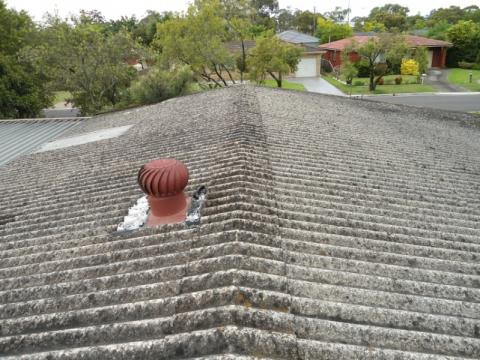
Until the 1980s, one of the most common uses of asbestos in Australian homes was as roofing material. The most common form of asbestos roofing was a corrugated fibro product manufactured by James Hardie Ltd called “Super Six”.
Corrugated asbestos roofing is thicker than corrugated iron, has a matte finish, and takes on a weathered appearance over time. It’s a familiar sight throughout Australia’s suburbs, especially those built in the postwar “fibro belts” in areas like Western Sydney.
Unfortunately, that weathering over time isn’t just cosmetic. It’s a sign of changes in the structure of the material. Asbestos roofs start to disintegrate after years of being exposed to the sun and rain – not to mention the hailstorms that are a regular feature of life in Sydney. By the time we at Airsafe see an asbestos roof, it’s often begun to disintegrate to the point where dust particles are collecting in gutters, waiting for a strong wind to make them airborne.
To make matters worse, asbestos roofing contains a higher concentration of asbestos than other types of fibro. And it contains all three major types of asbestos – chrysotile (“white asbestos”), amosite (“brown asbestos”) and crocidolite (“blue asbestos”).
Should I get my asbestos roof removed?
If you have an asbestos roof, you’re probably wondering whether it’s worth the expense to have it removed and replaced with asbestos-free material.
There’s currently no requirement in NSW to remove asbestos roofs, so the decision is yours. Obviously you will need to take into account the cost of removal and replacement. However, you should balance this against the factors in favour of having your asbestos roof removed:
- The more weathered your roof gets, the more risk there is of deterioration, which might expose your family and neighbours to harmful asbestos fibres.
- We’ve heard from some property owners that asbestos roofing makes a property more difficult to sell.
- Homes with asbestos roofs are also likely to be more expensive to insure. Some insurance companies may even decline to insure homes with asbestos roofs.
- You will almost certainly want to replace the roof at some point. Doing it sooner rather than later minimises the possibility of complications. It also means you avoid the possible rush if asbestos roof removal ever becomes compulsory, or if the risks become better-known.
We’re often asked about an alternative to removal called encapsulation. This isn’t something we recommend – if roofs have existing weathering, encapsulation doesn’t work well, and it’s only ever a temporary solution.
So let’s say you decide to have your asbestos roof removed and replaced. What kinds of precautions do you need to take?
You should treat asbestos roofing as friable
When it was originally installed, asbestos roofing was bonded asbestos, but over time it can become friable. This is confirmed by SafeWork NSW’s Safe Work on Roofs Code of Practice:
If fire, hail or water-blasting damages bonded asbestos, or the material is showing signs of wear from water and age, it may become friable asbestos material.
Existing asbestos-containing roofs are now nearly 30 years old or more. They have all been subject to weathering by rain, sun, wind, hail, air pollution, moss or lichen growth and salt (for coastal properties). Weathering erodes the cement matrix from around the asbestos fibres, allowing more ready release of those fibres as they lose their binding or are more easily exposed to breaking off.
Also, as the roof ages and the sheet thickness reduces, it becomes both weaker and more brittle, and so more prone to collapse from physical damage. Not only can this mean people fall through the roof from walking on it, but the roof will more easily break from other causes, such as hail or falling branches, and so release asbestos fibres.
Precautions to take with asbestos roofing
Above all, we want to stress the importance of air quality monitoring if you’re having an asbestos roof removed. The fact that dust from damaged roofs tends to collect in gutters, potentially putting you and your neighbours at risk, means you simply have to make sure asbestos fibres aren’t circulating in the air around removal works. If your asbestos removal contractor tells you air monitoring isn’t required, you need another contractor, it’s that simple. (If you’re in Sydney or NSW, contact Airsafe for a recommendation.)
Similarly, to get peace of mind once you’ve had your asbestos roof removed, have a professional clearance inspection from one of Airsafe’s experienced, qualified asbestos inspectors.
At Airsafe, we believe asbestos roofs are a significant risk to Australian communities. We’re lobbying the authorities to tighten up the rules. In the meantime, you can protect yourself, your family and your neighbours by following the precautions we recommend.
What is crystalline silica?
Silica is silicon dioxide, a naturally occurring and widely abundant mineral that forms the major component of most rocks and soils. There are non-crystalline and crystalline forms of silicon dioxide.
The crystalline form is found in multiple building materials such as bricks, tiles, concrete, engineered and natural stone products, sandstone, and fibre cement sheeting. It can be a health hazard when it turns into dust.
What is silica dust?
Silica dust is generated in workplace mechanical processes such as crushing, cutting, drilling, grinding, sawing or polishing materials containing crystalline silica.
Some dust particles are so small that they are not visible. These are commonly called respirable particles. Silica dust is more than 15 times smaller than a piece of human hair. Respirable silica dust particles are small enough to penetrate deep into the lungs, and can cause irreversible lung damage. (The non-crystalline or amorphous forms of silica do not cause this kind of lung damage.)
What diseases can silica dust cause?
Although respirable crystalline silica is an A1 carcinogen and the respiratory issues related to silica dust have been recognised for over a century, occupational lung disease has only come to the forefront of Australian safety management recently, after a surge in diagnosed cases of silicosis.
There are a number of forms of silicosis, depending on how much dust workers have been exposed to and over what period of time:
- acute silicosis, which can develop after a short exposure to very high levels of silica dust, within a few weeks or years, and causes severe inflammation and an outpouring of protein into the lung
- accelerated silicosis, which can develop after exposures of 3 to 10 years to moderate to high levels of silica dust and causes inflammation, protein in the lung and scarring of the lung (fibrotic nodules)
- chronic silicosis, which can develop after long term exposure to lower levels of silica dust and causes fibrotic nodules and shortness of breath, and can include progressive massive fibrosis where the fibrotic nodules in the lung aggregate.
Workers exposed to silica dust may also develop other diseases including:
- chronic bronchitis
- emphysema
- lung cancer
- kidney damage
- scleroderma (a disease of the connective tissue of the body that causes scar tissue to form in skin, joints and other organs).
Silica in the workplace: your responsibilities
Under the WHS regulations, persons conducting a business or undertaking (PCBUs) have specific duties to manage the risks to health and safety when using, handling, generating and storing hazardous chemicals, including silica.
The workplace exposure standard for respirable crystalline silica is that it must not exceed 0.05 mg/m3 (eight hour time weighted average).
How Can Airsafe Help
Hazard Identification
Airsafe can test material using a NATA accredited laboratory and provide a risk assessment based on the findings.
Workplace Monitoring
Airsafe is accredited by NATA for volume measurement. All filters are analysed by a NATA accredited facility.
All Airsafe test reports have metrological traceability, and all work is completed in accordance with the relevant Australian Standard.
If you need risk assessment or workplace monitoring for crystalline silica, call Airsafe today on (02) 9555 9034.
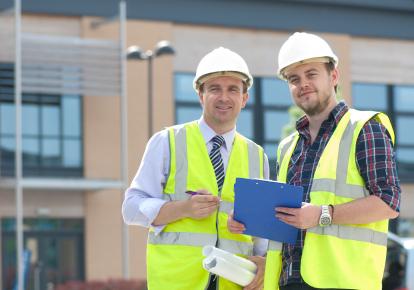
Air quality monitoring for asbestos is a specialised service. To get the most reliable results, make sure you use an organisation that is NATA accredited for volume measurement, like Airsafe.
What is air monitoring?
Air monitoring is used to make sure effective control measures are in place to prevent exposure to airborne asbestos fibres. There are various methods that can be used to estimate personal exposure to asbestos fibres. The one used in Australia is called the membrane filter method, and is set out in Safe Work Australia’s Guidance Note On The Membrane Filter Method For Estimating Airborne Asbestos Fibres 2nd Edition NOHSC:3003 (2005).
The membrane filter method consists of the following steps:
- A sample is collected by drawing a measured quantity of air through a membrane filter by means of a sampling pump.
- The filter is transformed from an opaque membrane into a transparent, optically homogeneous specimen.
- The respirable fibres are sized and counted in accordance with defined geometric criteria, using a phase contrast microscope and calibrated eyepiece graticule.
- The result is expressed as fibres per millilitre of air, calculated from the number of fibres observed on a known area of the filter and the volume of air sampled.
Using the parameters specified in the guidance note, the reporting limit is defined as 0.01 fibres/ml for both control purposes and exposure monitoring.
Special NATA accreditation for volume measurement
Because air monitoring is a specialised procedure, NATA administers a special form of accreditation for volume measurement related to air monitoring. Even facilities which have other forms of NATA accreditation may not be accredited for volume measurement.
If this is the case, the facility can only report on raw test data; they cannot report a concentration or volume measurement, and must include a statement on the report that “NATA accreditation does not cover the performance of this service”.
Airsafe is accredited for volume measurement
Airsafe does hold NATA accreditation for volume measurement. You can see our accreditation on the NATA website.
This means that Airsafe air monitoring test reports are fully compliant with your legal obligations. In particular:
- Airsafe has sampling pumps that have been calibrated with metrological traceability.
- Airsafe’s air monitoring test reports are NATA accredited in accordance with ISO 17025.
- Airsafe can report a concentration result in accordance with the NSW Work Health and Safety Regulation 2017 and the exposure standard.
Find out more about air monitoring: call Airsafe on (02) 9555 9034

Some asbestos contractors offer an all-in-one service: they test samples for asbestos, and if asbestos is found, they will remove it.
But rather than getting your asbestos testing done by an asbestos contractor, you should get samples tested independently, by a laboratory that’s NATA accredited for the type of testing you need.
Using a NATA-accredited laboratory is a requirement of the Work Health and Safety Regulation 2017. It will also ensure the testing is rigorous and independent.
Why not get testing done by the contractor?
Why should you be cautious about using an asbestos contractor for testing?
There are two main reasons: potential conflict of interest, and lack of expertise.
Asbestos contractors have a potential conflict of interest because, if tests come back positive, the material will have to be removed, resulting more revenue for the contractor. It’s not that we believe asbestos contractors deliberately falsify results, but a lack of independence can have subtly influence the way results are interpreted.
Asbestos contractors also have a lack of expertise, especially around the taking of samples (making sure the right material is being sampled) and the integrity of samples (making sure samples are treated the right way).
The only way to be sure asbestos testing is done with the right level of expertise is to demand NATA accreditation.
What is NATA accreditation?
NATA (the National Association of Testing Authorities) is recognised by the Australian Government as the national authority for the accreditation of laboratories and a peak authority for the accreditation of inspection bodies.
NATA Accreditation is about being able to have confidence in the data and information necessary for you to make informed decisions.
How can I tell if a testing service is NATA accredited?
You can check if a facility is NATA accredited, and the scope of their accreditation, at the NATA website.
What should I look for in a test report?
Unless the laboratory performing the tests has been involved in the sampling, the report may include a statement such as “samples were tested as received”. This means the contractor has provided the samples to the laboratory.
If the sampling itself was performed by an accredited laboratory, details of the sampling should be provided in a NATA-endorsed report.
Use Airsafe to collect and test samples for asbestos
Airsafe is NATA accredited in accordance with the Australian Standard AS 4964 — Method for the qualitative identification of asbestos in bulk samples. We collect samples for testing, then conduct testing in our state-of-the-art laboratory.
Our independence and NATA accreditation ensure sample integrity, and the high level of expertise of our staff means you can trust our test results. Our customer satisfaction and industry reputation are second to none.
Call Airsafe on (02) 9555 9034 to arrange sample collection and testing.
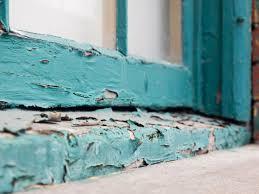
Until 2017, paint was deemed lead-free if it contained less than 1% lead by mass.
But with the release of new standards in 2017, that changed. The previous 1% allowable concentration of lead was reduced to 0.1% — a tenth of what it was before.
What does this mean for you? If you’re in business and a pre-1997 hazardous materials survey found your premises free of lead paint, that survey may now be out of date. Under the updated standards, if your workplace contains paint with a lead concentration greater than .1% but less than 1%, it is now considered lead-containing paint.
If you suspect this might be the case, you should have another hazardous materials survey conducted. Fill in our quote request form or give us a call on (02) 9555 9034.
About the revised standards
The relevant standards were published by Standards Australia in 2017, replacing a previous set of standards:
- Guide to hazardous paint management, Part 1: Lead and other hazardous metallic pigments in industrial applications
- Guide to hazardous paint management, Part 2: Lead paint in residential, public and commercial buildings
The revision to these standards reflect changes in the amount of lead allowed in manufactured paint. This amount has declined drastically over the years:
- 50% before 1965
- 1% in 1965
- 0.25% in 1992
- 0.1% in 1997
In other words, the standards for managing paint reflect the fact that paint has now been manufactured with very low levels of lead for 20 years. The way we manage the risks of lead in paint has now “caught up” with the rules around manufacturing, reflecting a more up-to-date understanding of the concentration at which risks may be present.
What are the risks of lead paint?
The health risks of lead arise when it is ingested or inhaled. When paint is in sound condition, there is little risk of lead particles being inhaled. The risks occur when the paint starts “chalking” or flaking. There’s a particular risk where paint can get worn away through frequent use, such is in sash windows.
As it deteriorates, lead paint can produce dust deposits, or lead residues can mix with accumulated dust. Dust from lead paint can also settle ouside buildings, in soil, water, food and vegetation. This means care must be taken in the placement of gardens and drinking water catchment areas where lead has been detected.
Some methods of removing lead paint are also risky, including sanding, burning and mechanical scraping. Lead residue from paint removal can be particularly difficult to detect and remove, as small particles of dust may lodge in furnishings and carpets.
If you’re commencing work on a new site, there’s a risk that it may already be contaminated with lead because of earlier, poorly controlled maintenance or repainting practices. You may need to determine background levels in surrounding soil, or on interior and exterior surfaces, prior to work commencing.
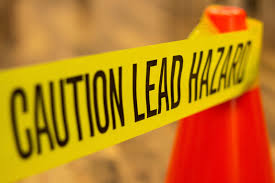
What are the health effects of lead exposure?
Human bodies get contaminated with lead in two main ways: by breathing in dust or fumes that contain lead, and by swallowing food or water that contains lead. Serious long-term health problems can come from high lead levels, harming almost every part of the body, especially the brain, kidneys and reproductive organs. The developing brains and nervous systems of unborn children are especially at risk from lead contamination.
Symptoms don’t necessarily appear straight away in people whose health is affected by lead. When they do appear, symptoms include lethargy, stomach pain or constipation, headaches and irritability. Children show these symptoms at lower levels of exposure than adults do.
What regulations apply to lead paint?
Under the Protection of the Environment Operations Act 1997, councils have the power to control pollution caused by lead hazards. Councils can issue prevention notices to anyone they suspect of acting in a way that endangers the environment.
The Work Health and Safety Regulation 2017 contains the following clauses, which can carry penalties if not carried out:
- “A person conducting a business or undertaking at a workplace must assess each lead process carried out by the business or undertaking at the workplace to determine if lead risk work is carried out in the process.”
- “A person conducting a business or undertaking at a workplace must ensure, so far as is reasonably practicable, that contamination by lead is confined to a lead process area at the workplace.”
- “A person conducting a business or undertaking at a workplace must ensure that any measures implemented to control health risks from exposure to lead at the workplace are reviewed and as necessary revised.”
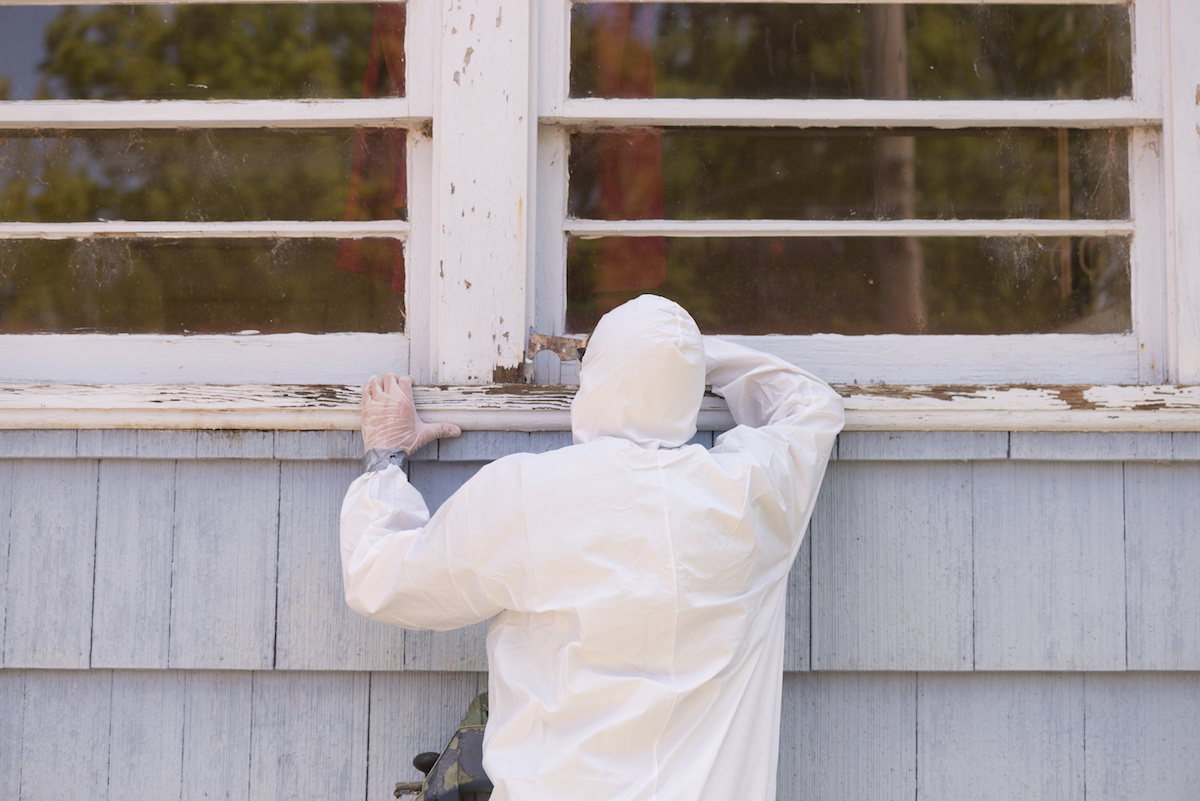
What should I do next?
If you have an existing hazardous materials survey that you think may be out of date, or you have any questions about lead, call Airsafe on (02) 9555 9034.
To get a fast quote for a hazardous materials survey, fill in our quote request form.
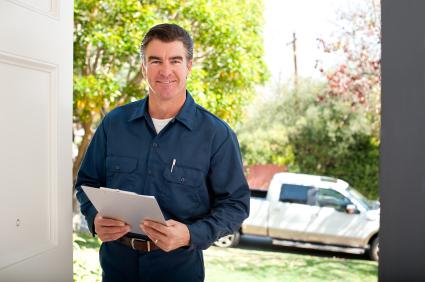
With increasing concerns about the “third wave” of asbestos-related illnesses caused by home renovations, it’s becoming clearer how important it is to be aware of any possible asbestos dangers before you start work on your house.
And this doesn’t just mean the house you already own. In today’s Sydney property market, many people are buying houses in need of some TLC, with a view to renovation or redevelopment. But the prevalence of asbestos in 20th century housing in Sydney means the “renovator’s delight” can easily become a renovator’s nightmare.
So how do you prevent this? The answer is a pre-purchase asbestos inspection. Just as you have a pre-purchase inspection to make sure the home’s foundations are solid, you can also put your mind at rest by getting a knowledgeable asbestos consultant to inspect the property before you buy.
Airsafe are the most knowledgeable asbestos consultants in the business, so why not book a pre-purchase asbestos inspection with us today.
The “third wave” of asbestos victims
As we’ve written about before, Australia is seeing a “third wave” of asbestos-related illness. The first wave affected those involved in asbestos mining, the second those who worked with asbestos products. A June 2012 report by the Department of Education, Employment and Workplace Relations warns that:
A developing demographic…is appearing in the population, and includes ‘do-it-yourself’ home renovators and their families. In the absence of timely and decisive intervention, many more people for generations to come will continue to contract these avoidable incurable fatal illnesses.
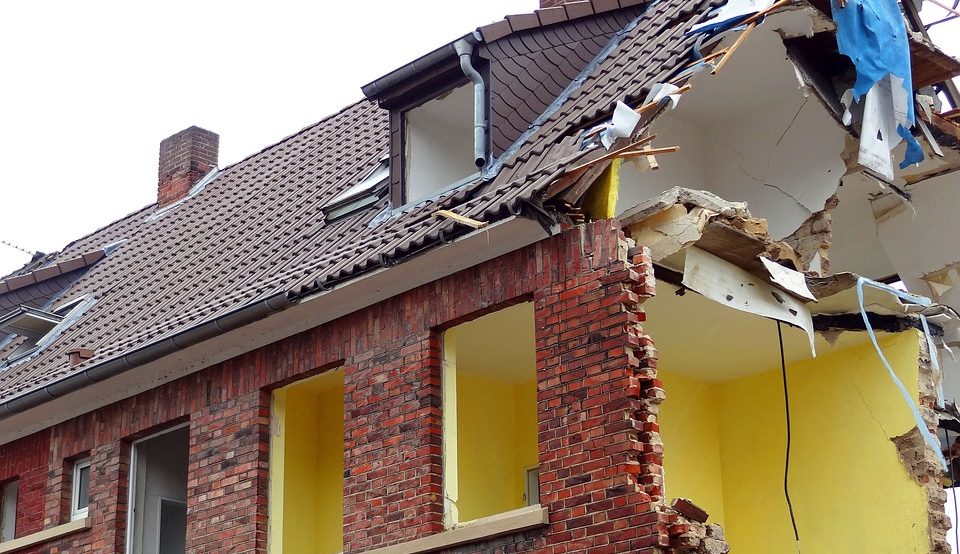
The dangers of absestos for home renovators were brought home in a 2017 front page story in the Sydney Morning Herald.
The article features several real-life stories about Sydney homeowners who have been diagnosed with asbestos-related illnesses that are thought to have been caused by taking insufficient precautions before and during renovation.
One of these homeowners was Herman Maifoffer, who in 1976 added an extension to his 3 bedroom house in Cabramatta, south-western Sydney, using fibro cement manufactured by James Hardie that he had bought from a hardware store. 40 years later, he died of mesothelioma.
Another homeowner featured in the story is Cely Benchoam, whose diagnosis of mesothelioma was traced back to two weeks she spent renovating her kitchen way back in 1966.
Both of these stories reflect one of the cruellest aspects of asbestos-related illness: the extremely long period — often decades — that can separate initial exposure from the first symptoms of the illness. Unfortunately, this means that we may not know for many years the extent of asbestos-related illness caused by today’s renovation craze.
With 8 million home renovations in Australia every year and 6 out of 10 mesothelioma sufferers having taken part in home renovations involving asbestos, experts fear that we may only be in the early stages of the “third wave”. Their fears are exacerbated by the popularity of home renovation TV shows that may not sufficiently warn viewers about the dangers of asbestos. Peter Tighe, CEO of Asbestos Safety and Eradication Agency, says:
We have written to the producers of those shows asking can they put just a short warning on screen.…We write to them, you don’t get a response, you ring up, you get a media person who gives you spin.
Rod Smith of the Bernie Banton Foundation, who lost his wife to asbestos-related illness, thinks this cavalier attitude by TV producers is having a real-life impact:
We had one person watch the show on a Friday night and then she smashed up her ensuite over the weekend – they have now totally contaminated their whole family.…This is the problem with these shows and they have a part to play. The number one factor they should be highlighting is that they have had an asbestos assessment done and it has been removed or condensed down.
Making things worse for these potential victims is that they have no access to workplace compensation, which can leave them involved in expensive, perhaps futile legal processes, chasing around for someone to take responsibility for what they’ve been exposed to.
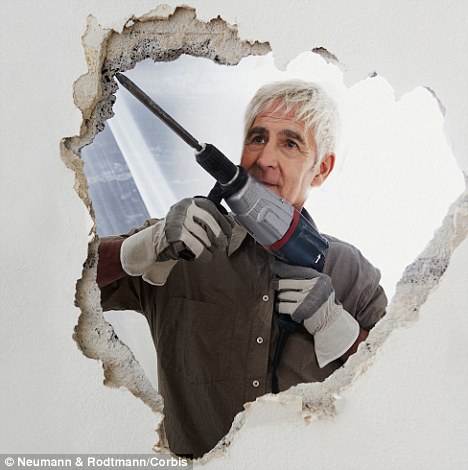
How you can take precautions as a home buyer
The NSW Ombudsman has called for vendor disclosure laws, meaning that home sellers would be legally obliged to reveal if a home they had put on the market contained asbestos.
In the meantime, however, it’s very much buyer beware. The best way to prevent future problems is to organise a pre-purchase asbestos inspection.
This can bring some challenges, especially if the house is being auctioned. The current owners may be reluctant to allow an inspection to take place or samples to be taken for laboratory testing. So it’s more important than ever to engage asbestos inspectors who know what they’re doing. It’s not going to set your mind at rest if somebody who doesn’t know what they’re looking for certifies a property as asbestos-free based on a superficial look around.
That’s why your best option is to talk to Airsafe. Call us on (02) 9555 9034 and explain that you need a pre-purchase asbestos inspection. We’ll talk you through the options and help you deal with any hurdles.
Having this initial inspection done by Airsafe can also save you time and inconvenience later on, when you’re the owner of the property and the time comes to renovate or rebuild. Because Airsafe is so well-regarded in the industry, councils processing development applications accept our inspection reports without modification. We’ve heard many stories of councils rejecting inspection reports by less qualified asbestos consultants.
Whether you’re buying a house to renovate and sell, or creating your dream home, it’s possible to renovate safely when you’re aware of the risks and take the right precautions around asbestos. Don’t risk your family being part of the third wave of asbestos victims: talk to Airsafe first.
